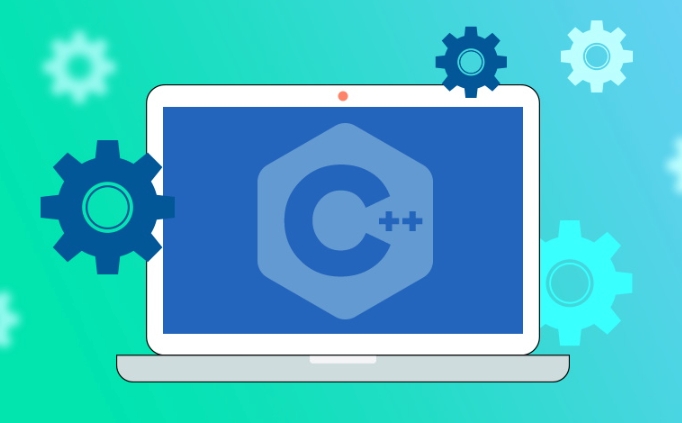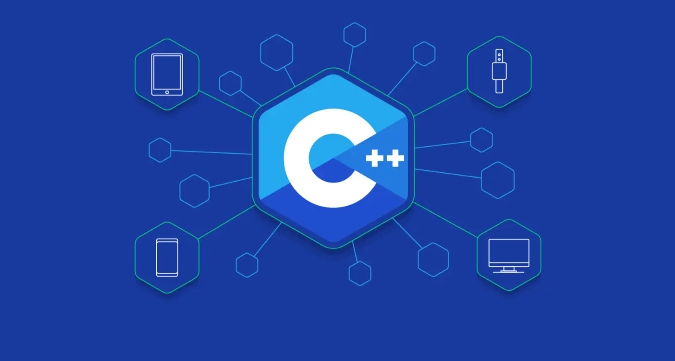To use C to develop robots and embedded systems from scratch, you need to master the following key points: 1. Learn basic syntax and object-oriented programming, especially classes, objects, inheritance, polymorphism, as well as pointers, references, memory management and STL containers; 2. Understand the structure of embedded systems, including hardware abstraction layer (HAL), interrupt processing and the use of RTOS; 3. Master common libraries and frameworks, such as ROS, Eigen, Boost.Asio and Paho-MQTT; 4. Build a development environment and master debugging skills, such as using Makefile, CMake, GDB, IDE and log output. Gradually improve skills through simulators or small platform practices.

If you plan to use C for robots or embedded development, then congratulations on choosing the right language. C performs well in performance, control hardware capabilities and cross-platform compatibility, and is very suitable for scenarios with strong real-time and resource-constrained. This article will talk about how to start from scratch and use C to step into robots and embedded doors.

Learn basic syntax and object-oriented programming
Before entering specific applications, you must lay a solid foundation for C. Especially the object-oriented programming (OOP) set: concepts such as classes, objects, inheritance, and polymorphism often appear in robot code. Components such as sensor modules, motor drivers, etc. are usually packaged into classes for management.

Recommended to master the key points:
- Pointers and references (common in embedded development)
- Memory management (new/delete, RAII mode)
- STL containers (vector, map, string, etc., but be careful to use in some embedded environments)
Don’t chew too complicated templates or metaprogramming at the beginning. Those are useful in actual projects, but they are easy to get around in the introductory stage.

Understand the basic structure of embedded systems
C is used slightly differently in embedded form than on PC, especially on resource-constrained devices. There are several key points you need to know:
- Hardware Abstraction Layer (HAL): Most embedded projects will have a layer of hardware abstraction so that the code can be more general. You can encapsulate the underlying register operation in C.
- Interrupt processing : C can write an interrupt service program (ISR), but be careful not to do too much in it, such as calling complex functions or dynamic memory allocation.
- RTOS is used in conjunction with : Many robot systems run on RTOS (such as FreeRTOS), and C can cooperate with task scheduling and thread communication well.
To give a simple example, a motor controller class may contain initialization functions, setting speed interfaces, and internally call the PWM output function of the HAL layer.
Commonly used libraries and frameworks in actual projects
In real projects, wheels are rarely made from scratch. Here are some common tools and libraries:
- ROS (Robot Operating System) : Although the name is system, it is actually more like middleware. It supports C and Python, and many robot projects are built on ROS.
- Eigen : used for matrix operations and pose transformation, it is a very important mathematical library in robot algorithms.
- Boost.Asio : If you want to do network communication or serial communication, this library is quite practical.
- Paho-MQTT for C : Robot projects related to the Internet of Things may use the MQTT protocol, and this library can help you quickly access.
Some embedded platforms (such as STM32 or Arduino) have limited support for C. At this time, appropriate cropping functions should be avoided by avoiding the use of STL or exception mechanisms.
Development environment construction and debugging skills
The construction process of C projects is more complicated than that of scripting languages. It is recommended to start with a simple Makefile and try CMake later, especially in cross-platform projects.
In terms of debugging, GDB is a must-have tool and can also be used with IDE (such as VS Code PlatformIO or CLion). For embedded development, the JTAG/SWD debugger is also very important, allowing you to see variable changes, break points, and single-step execution.
Also, printing logs is a good habit, especially on devices without a graphical interface. You can encapsulate a simple log output class yourself and control the output content according to the level (info/warning/error).
Basically that's it. C The application threshold for robots and embedded applications is not too high, but you need to have a certain understanding of the underlying layer. At the beginning, you can start with a simulator or a small robot platform and learn while practicing.
The above is the detailed content of C tutorial for robotics and embedded systems. For more information, please follow other related articles on the PHP Chinese website!

Hot AI Tools

Undress AI Tool
Undress images for free

Undresser.AI Undress
AI-powered app for creating realistic nude photos

AI Clothes Remover
Online AI tool for removing clothes from photos.

Clothoff.io
AI clothes remover

Video Face Swap
Swap faces in any video effortlessly with our completely free AI face swap tool!

Hot Article

Hot Tools

Notepad++7.3.1
Easy-to-use and free code editor

SublimeText3 Chinese version
Chinese version, very easy to use

Zend Studio 13.0.1
Powerful PHP integrated development environment

Dreamweaver CS6
Visual web development tools

SublimeText3 Mac version
God-level code editing software (SublimeText3)

Hot Topics
 C Polymorphism : is function overloading a kind of polymorphism?
Jun 20, 2025 am 12:05 AM
C Polymorphism : is function overloading a kind of polymorphism?
Jun 20, 2025 am 12:05 AM
Yes, function overloading is a polymorphic form in C, specifically compile-time polymorphism. 1. Function overload allows multiple functions with the same name but different parameter lists. 2. The compiler decides which function to call at compile time based on the provided parameters. 3. Unlike runtime polymorphism, function overloading has no extra overhead at runtime, and is simple to implement but less flexible.
 What Are the Different Kinds of Polymorphism in C ? Explained
Jun 20, 2025 am 12:08 AM
What Are the Different Kinds of Polymorphism in C ? Explained
Jun 20, 2025 am 12:08 AM
C has two main polymorphic types: compile-time polymorphism and run-time polymorphism. 1. Compilation-time polymorphism is implemented through function overloading and templates, providing high efficiency but may lead to code bloating. 2. Runtime polymorphism is implemented through virtual functions and inheritance, providing flexibility but performance overhead.
 C : Is Polymorphism really useful?
Jun 20, 2025 am 12:01 AM
C : Is Polymorphism really useful?
Jun 20, 2025 am 12:01 AM
Yes, polymorphisms in C are very useful. 1) It provides flexibility to allow easy addition of new types; 2) promotes code reuse and reduces duplication; 3) simplifies maintenance, making the code easier to expand and adapt to changes. Despite performance and memory management challenges, its advantages are particularly significant in complex systems.
 C Destructors: Common Errors
Jun 20, 2025 am 12:12 AM
C Destructors: Common Errors
Jun 20, 2025 am 12:12 AM
C destructorscanleadtoseveralcommonerrors.Toavoidthem:1)Preventdoubledeletionbysettingpointerstonullptrorusingsmartpointers.2)Handleexceptionsindestructorsbycatchingandloggingthem.3)Usevirtualdestructorsinbaseclassesforproperpolymorphicdestruction.4
 Polymorphism in C : A Comprehensive Guide with Examples
Jun 21, 2025 am 12:11 AM
Polymorphism in C : A Comprehensive Guide with Examples
Jun 21, 2025 am 12:11 AM
Polymorphisms in C are divided into runtime polymorphisms and compile-time polymorphisms. 1. Runtime polymorphism is implemented through virtual functions, allowing the correct method to be called dynamically at runtime. 2. Compilation-time polymorphism is implemented through function overloading and templates, providing higher performance and flexibility.
 C tutorial for people who know Python
Jul 01, 2025 am 01:11 AM
C tutorial for people who know Python
Jul 01, 2025 am 01:11 AM
People who study Python transfer to C The most direct confusion is: Why can't you write like Python? Because C, although the syntax is more complex, provides underlying control capabilities and performance advantages. 1. In terms of syntax structure, C uses curly braces {} instead of indentation to organize code blocks, and variable types must be explicitly declared; 2. In terms of type system and memory management, C does not have an automatic garbage collection mechanism, and needs to manually manage memory and pay attention to releasing resources. RAII technology can assist resource management; 3. In functions and class definitions, C needs to explicitly access modifiers, constructors and destructors, and supports advanced functions such as operator overloading; 4. In terms of standard libraries, STL provides powerful containers and algorithms, but needs to adapt to generic programming ideas; 5
 What Are the Various Forms of Polymorphism in C ?
Jun 20, 2025 am 12:21 AM
What Are the Various Forms of Polymorphism in C ?
Jun 20, 2025 am 12:21 AM
C polymorphismincludescompile-time,runtime,andtemplatepolymorphism.1)Compile-timepolymorphismusesfunctionandoperatoroverloadingforefficiency.2)Runtimepolymorphismemploysvirtualfunctionsforflexibility.3)Templatepolymorphismenablesgenericprogrammingfo
 C Polymorphism: Coding Style
Jun 19, 2025 am 12:25 AM
C Polymorphism: Coding Style
Jun 19, 2025 am 12:25 AM
C polymorphismisuniqueduetoitscombinationofcompile-timeandruntimepolymorphism,allowingforbothefficiencyandflexibility.Toharnessitspowerstylishly:1)Usesmartpointerslikestd::unique_ptrformemorymanagement,2)Ensurebaseclasseshavevirtualdestructors,3)Emp






